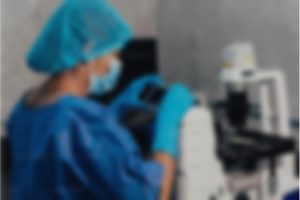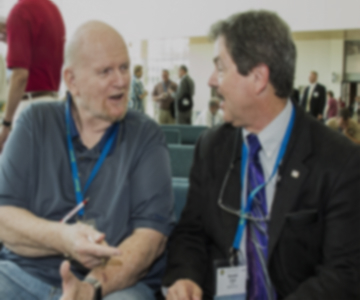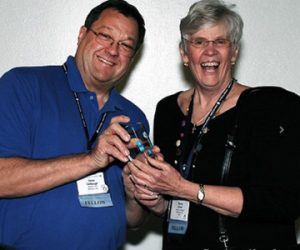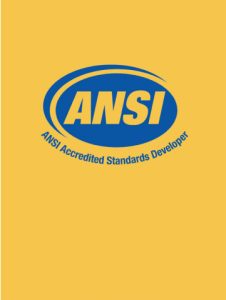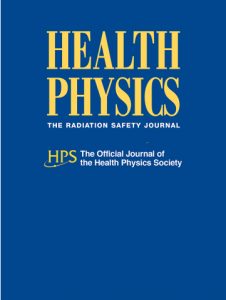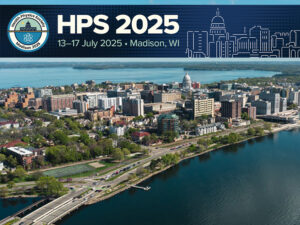1940 — 2014
by Robert May, CHP

Rest in Peace, Old Mate
It is rare to meet someone who will significantly challenge you, expand your horizons, and be a good friend to you in the process. Geoffrey Stapleton was such a supervisor, mentor, and friend at the Continuous Electron Beam Accelerator Facility (CEBAF, now Jefferson Lab). When he introduced me to his group of friends and colleagues, I met some of the most interesting, talented, and intelligent people; most of them were professionals in the field of accelerator health physics. Some have been lost to the advance of time, such as Wade Patterson, and some continue their friendship and their mentorship today.
Geoffrey began his long career in the sciences as an honors graduate of the Royal Institute of Chemistry in 1962. Within the first 15 years of his career in the United Kingdom, he received certification (and professional recognition) as a chartered chemist and was elected a fellow of the Royal Institute of Chemistry. From 1962 to 1969, Geoffrey worked for the Atomic Energy Authority at Harwell as an industrial chemist in research and development, where he helped develop processes for 239Pu and fission product decontamination and the safe disposal of radioactive effluent from reactor operations.
In 1969 Geoffrey moved to the Rutherford Appleton Laboratory, where he worked in and eventually headed a 22-person radiochemistry group conducting research on the stability of plastics exposed to ionizing radiation. By 1979 Geoffrey was leading the Scientific Administrative Group, a 25-person team that served as a national and international liaison to promote the Rutherford Laboratory's scientific resources and develop collaborative efforts. In 1979 Geoffrey was recruited to take the lead role in dealing with problems likely to arise from a new high-current, rapid-cycling accelerator spallation neutron source that used a uranium target. Geoffrey became a member of the Institute of Radiation Protection and, like many good health physicists, brought a multidisciplinary approach to the field of accelerator health physics.
In 1985 Geoffrey joined a new accelerator project in the United States, eventually called the CEBAF, in Newport News, Virginia. The CEBAF accelerator was the first large-scale application of superconducting radiofrequency accelerating technology. Geoffrey was responsible for developing the radiation protection requirements for the CEBAF complex and experimental facilities. This included analyzing radiation source terms, designing shielding, and developing requirements for and implementing the engineered and administrative systems necessary for the protection of personnel and the environment during the commissioning and operation of a high-power accelerator.
After becoming a member of the Health Physics Society (HPS), Geoffrey worked with Ralph Thomas, Wade Patterson, and others to develop the Accelerator Section of the HPS; in 1993 Geoffrey was the Accelerator Section's third president, after Patterson and Thomas. During that time he contributed significantly to the development of the very first edition of guidance documentation for the implementation of the Department of Energy Accelerator Safety Order.
Geoffrey took a 2-year hiatus, from 1992 to 1994 (he succumbed to the siren call of a new project: the Superconducting Super Collider in Waxahachie, Texas), and then returned to CEBAF, where he spent the next 3 years collaborating on the development of tools to evaluate the CEBAF site boundary dose from sky-shine neutron radiation for upcoming experiments. To the chagrin of his coworkers (and the local Korean restaurant) Geoffrey retired in 1997. Shortly after retirement, he provided consulting support to the Spallation Neutron Source, then a new project under consideration at Oak Ridge National Lab.
Geoffrey maintained two residences with his wife Shirley, one in the United States (in Florida) and one in the United Kingdom. This allowed Geoffrey to continue to pursue his love of flying and allowed Shirley and him to maintain the relationships that they cultivated over many years. Geoffrey also taught as an adjunct professor in a community college near their home in the United States until the time Geoffrey and Shirley moved back to the United Kingdom to enjoy their family and their grandchildren. In 2001 the HPS Awards Committee selected Geoffrey to receive the prestigious HPS Fellow Award.
Geoffrey was a wonderful, gregarious man—a man of faith and integrity. He was no-nonsense when it came to work. He had a love of science and enjoyed sharing his fascination with other lifelong learners. He loved to be challenged, even in his recreation, as evidenced by his certifications as a private pilot and ocean yachtsman.
Geoffrey passed away on 4 October 2014 after battling a rare form of cancer for several years. He is survived by his wife Shirley, his daughters Helen and Lucy, and his son Jonathan and their families. He will be greatly missed. The family asks that any monetary memorial for Geoffrey be directed to the International Waldenstrom's Macroglobulinemia Foundation, 3932D Swift Road, Sarasota, FL, 34231-6541.

